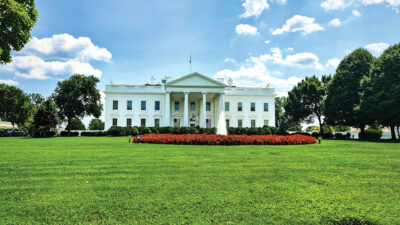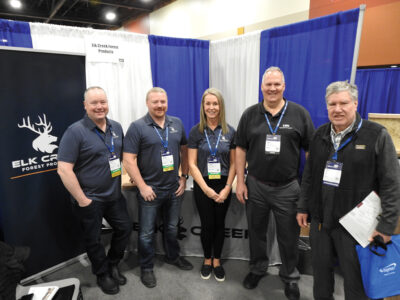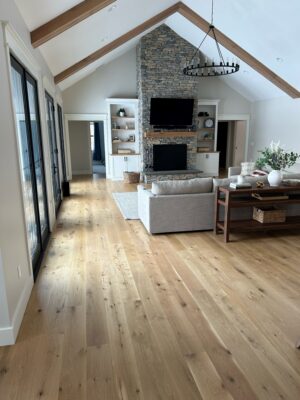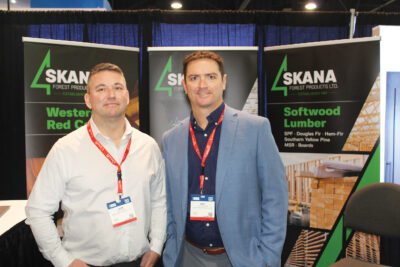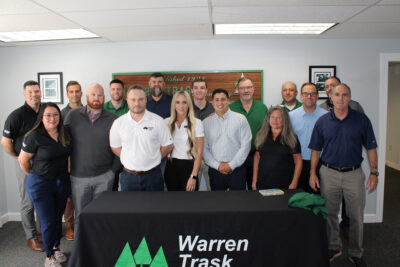
In high moisture conditions, wood can be subject to attack by insects, microorganisms, and decay fungi. That’s why many builders opt for pressure-treated wood with preservatives to help ensure long-term structural performance by protecting lumber used in a wide range of service conditions. Pressure-treated Southern Pine lumber is an economical and renewable building material well-suited for outdoor use.
There are various processes used to protect wood products, including pressure, non-pressure, thermal, nonbiocidal, and fire-retardant treatments. There’s also various preservatives used for each treatment process. The best preservative for any project largely depends upon the product, species, and end-use application.
Southern Pine’s unique cellular structure is very open and easily permits the deep penetration of preservatives, rendering the wood useless as a food source for fungi, termites, and micro-organisms. Its superior treatability has made it the preferred species when pressure treatment with wood preservatives is required.
Wood Preservative Systems
There are three broad classifications of preservatives used to pressure treat wood products:
• Waterborne preservatives serve a variety of uses including residential, commercial, marine, agricultural, recreational, and industrial applications. They are most often specified because they are clean in appearance, odorless, paintable.
• Creosote preservatives, including creosote/coal tar mixtures, protect railroad ties, marine pilings, and utility poles.
• Oilborne preservatives are used primarily for utility crossarms and poles, piling, posts, and glue laminated mass timber.
Treated Wood: The Sustainable Option
Life Cycle Assessments (LCA) are an essential part of green building because it offers an objective and consistent way to measure the environmental impacts of building materials and assemblies. LCA confirms the environmental and other advantages of wood construction. Study after study in Europe, North America, and elsewhere has shown that wood outperforms other products when considered over its complete life cycle.
But how does wood treated with preservatives compare to other building products used for the same application? Members of the Treated Wood Council examined the issue and published a series of life cycle comparisons on a range of treated products, from decking to marine piling. Regardless of the application, analysis shows preservative-treated wood has a lower environmental impact when compared to steel, concrete, or plastic composites.
Why? Because wood products require less energy to manufacture – meaning fewer greenhouse gasses, like CO2.
And trees use CO2 to grow, changing greenhouse gases into the building blocks we know as wood. That’s why wood products and sustainable working forests are increasingly being recognized as tools to counteract climate change.

Ensuring that sustainability is paramount for the Southern Pine lumber industry, which is guided by one central principle: plant more trees than are harvested.
Forests are managed for future generations, and the industry takes this seriously. For every one tree that is harvested, five new trees are planted. The industry plants and manages on a 30- to 45-year cycle, which means seedlings planted today won’t be ready for a first thinning at least until 2038.
Identification: Grade And Quality Marks
Southern Pine treated with preservatives standardized by The American Wood Protection Association (AWPA), which is the standards-writing organization for the U.S. wood-treating industry, or evaluated by ICC Evaluation Service (ICC-ES) must be monitored by an accredited third-party inspection agency. All treated Southern Pine must be identified with a treated quality mark – either plastic end tag or ink stamp – conforming to building code standards.
Treated wood quality marks identify wood products treated with preservatives standardized by AWPA or evaluated by ICC-ES. Use of such marks ensures:
•The preservative is EPA-approved for end-use application.
•The wood product is treated in compliance with federal law.
•The preservative retention and penetration meet the manufacturing
specifications.
•An accredited third-party quality-audit program has inspected the pressure-treated wood product for standards compliance.
AWPA-standardized preservatives and ICC-ES-evaluated preservatives are accredited by the ALSC and the International Accreditation Service (IAS), respectively.
SFPA Pressure-Treated Southern Pine Reference Guide
Check out the Southern Forest Products Association’s Pressure-Treated Southern Pine publication at southernpine.com/lumber-use-library so you and your customers better understand the following:
•Introduction to pressure-treated Southern Pine
•Pressure-treating process code acceptance identification
•Wood preservative systems
•Specification guidelines and examples (simplified and detailed)
•Common preservatives and retentions by product and seven key end uses
•Long-term performance best practices
•Span tables
•Sustainability


